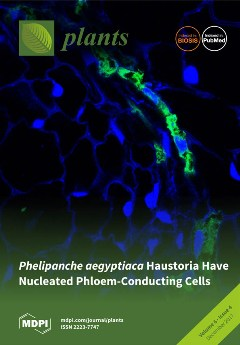The phenolic composition of leaves from
Phyllanthus acuminatus L., a plant commonly used in Costa Rica as traditional medicine, was studied using UPLC-ESI-MS on an enriched phenolic extract. A total of 20 phenolic compounds were identified, comprising eight flavonoids (two flavanones—pinocembrin isomers and six derivatives from apigenin, chrysin, quercetin, and kaempferol); seven ellagitannins, two flavan-3-ols (prodelphinidin B dimer and (epi)gallocatechin); and three phenolic acids (ellagic acid, trimethylellagic acid, and ferulic acid). All of these compounds are reported for the first time in
P. acuminatus, while previously reported in the genus
Phyllanthus. Antioxidant evaluation was performed for
P. acuminatus phenolic extract obtaining DPPH results with a remarkably low IC
50 value of 0.15 μg/mL. Also, cytotoxicity on gastric AGS and colon SW20 adenocarcinoma cell lines was evaluated, and highly promising results were obtained, with IC
50 values of 11.3 μg/mL and 10.5 μg/mL, respectively. Furthermore, selectivity index values obtained when comparing cytotoxicity on normal Vero cells was SI > 20 for both cancer cell lines, indicating a particularly high selectivity. Additionally, Justicidin B, a metabolite extensively studied for its antitumoral activity, was isolated from a non-polar extract of
P. acuminatus, and comparatively evaluated for both bioactivities. The DPPH value obtained for Justicidin B was moderate (IC
50 = 14.28 μg/mL), while cytotoxicity values for both AGS (IC
50 = 19.5 μg/mL) and SW620 (IC
50 = 24.8 μg/mL) cell lines, as well as selectivity when compared with normal Vero cells (SI = 5.4 and 4.2 respectively), was good, but lower than
P. acuminatus extract. These preliminary results suggest that
P. acuminatus enriched phenolic extract containing flavonoids, ellagitannins, flavan-3-ols, and phenolic acids, reported for the first time in this plant, could be of interest for further cancer cytotoxicity studies to elucidate structure–bioactivity relationships, and the molecular mechanisms and pathways.
Full article






